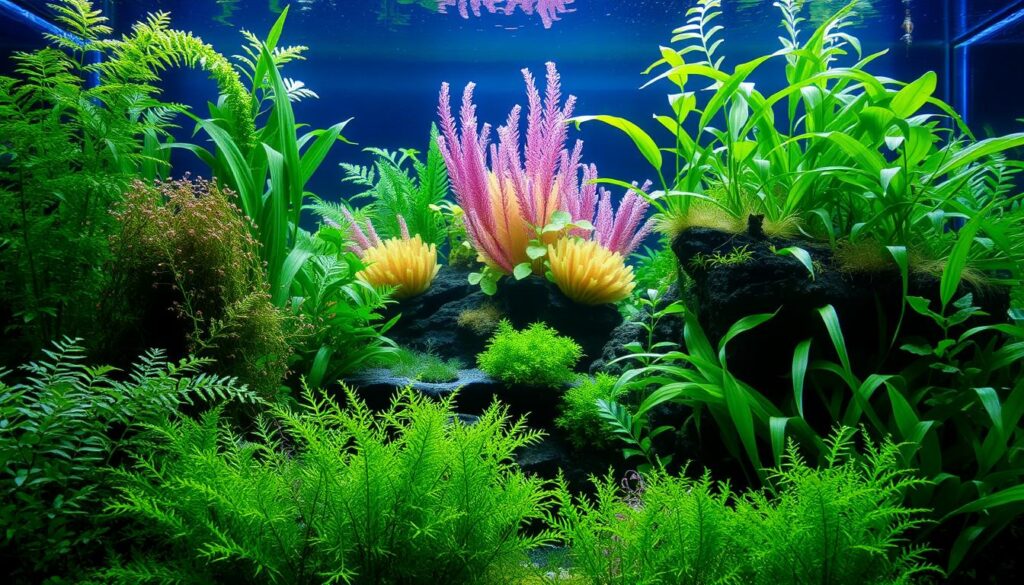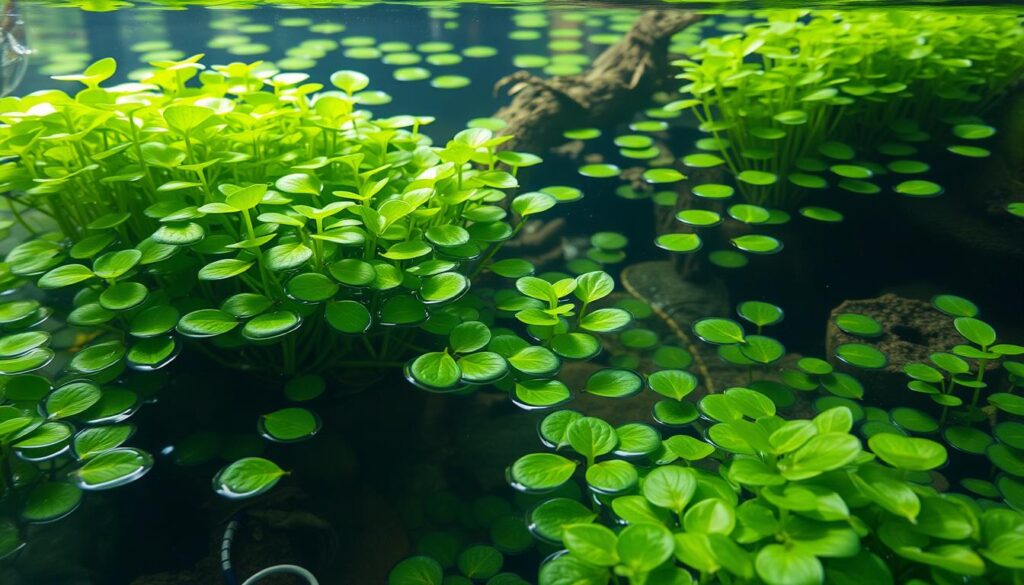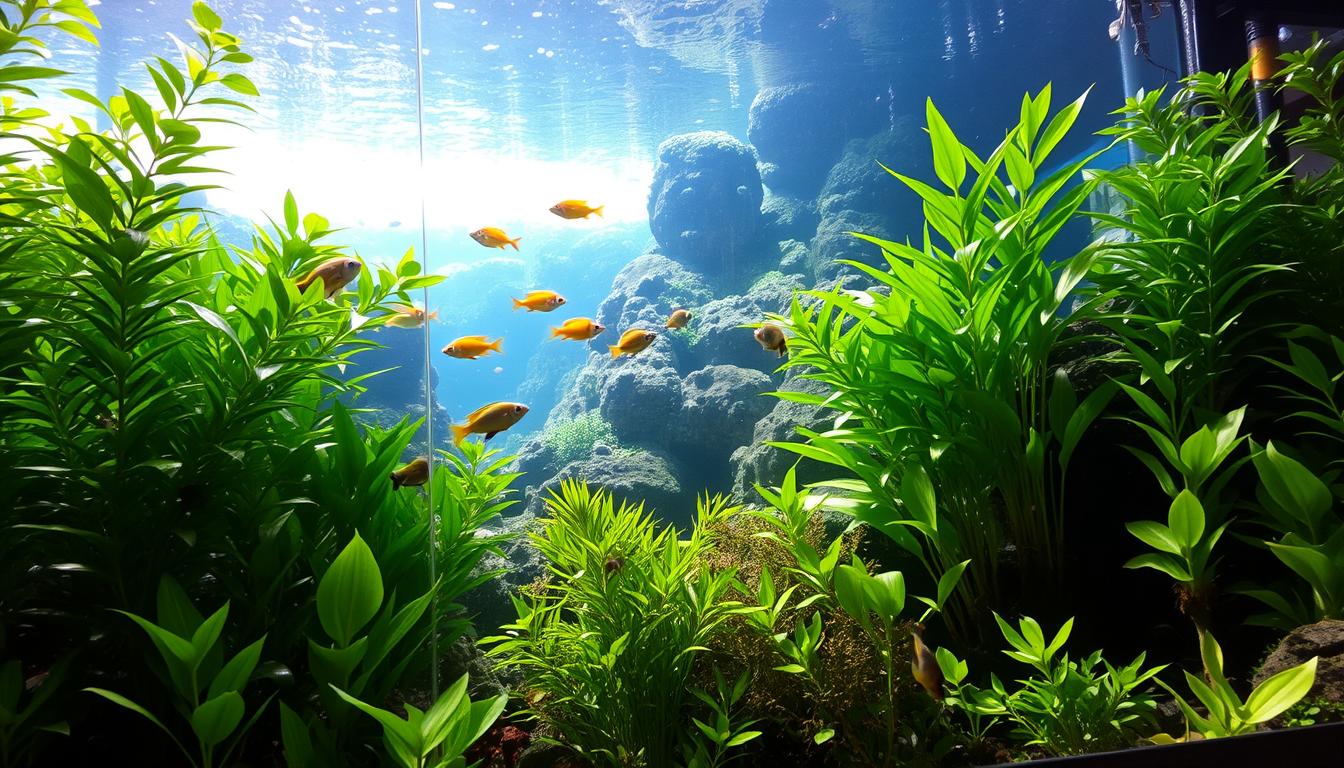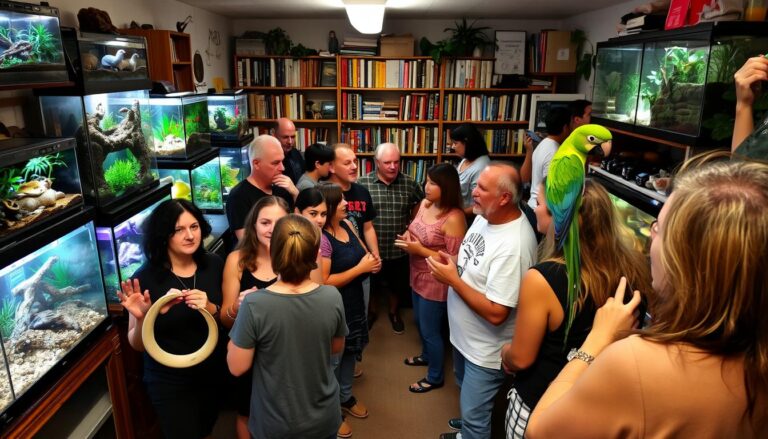Liven Up Your Space with ean-u Live Plants
Are you looking to transform your aquarium into a thriving underwater world? One of the most effective ways to achieve this is by incorporating live plants into your aquatic environment. Not only do they add a touch of natural beauty, but they also play a crucial role in maintaining a balanced ecosystem. By introducing live…
Are you looking to transform your aquarium into a thriving underwater world? One of the most effective ways to achieve this is by incorporating live plants into your aquatic environment. Not only do they add a touch of natural beauty, but they also play a crucial role in maintaining a balanced ecosystem.
By introducing live plants into your aquarium, you can enhance the visual appeal and health of your aquatic environment. With various types of plants available, you can choose the ones that suit your aquarium conditions and fish species. But, the question remains: how can you make the most of these plants in your aquarium?
Key Takeaways
- Live plants enhance the aesthetic appeal of your aquarium.
- They contribute to a balanced ecosystem.
- Various types of plants are available for different aquarium setups.
- Selecting the right plants is crucial based on your aquarium conditions and fish species.
- A comprehensive guide will follow to cover plant selection and maintenance.
The Benefits of Adding ean-u Live Plants to Your Aquarium
Ean-u live plants are a valuable addition to any aquarium, offering a multitude of benefits that improve water quality and enhance the overall health of your fish. These plants not only beautify the aquarium but also play a crucial role in creating a balanced ecosystem.
Natural Filtration and Water Quality
Ean-u live plants serve as natural filters by absorbing nitrates and other waste compounds, significantly improving water quality. This natural filtration process reduces the need for frequent water changes, making aquarium maintenance easier and more efficient. By competing for nutrients, these plants also help in preventing algae growth, leading to clearer water and healthier tank conditions.
| Benefit | Description |
|---|---|
| Natural Filtration | Absorbs nitrates and waste compounds, improving water quality. |
| Reduced Water Changes | Less frequent water changes needed due to improved water quality. |
| Algae Control | Competes with algae for nutrients, reducing algae growth. |
Oxygen Production and Carbon Dioxide Absorption
Aquatic plants produce oxygen through photosynthesis, creating a healthier environment for fish and other aquatic creatures. They also absorb carbon dioxide produced by fish, contributing to a balanced ecosystem that mimics natural aquatic environments. This balance is crucial for the well-being of fish and promotes a healthy aquarium.

Creating Natural Habitats for Fish
Ean-u live plants provide shelter and create microhabitats for fish, reducing stress and promoting natural behaviors such as breeding and exploration. By incorporating these plants into your aquarium, you can create a more natural and engaging environment for your fish, enhancing their overall activity and well-being.
By understanding the benefits of ean-u live plants, aquarium owners can make informed decisions to create a thriving aquatic environment. Whether you’re a seasoned aquarist or just starting out, incorporating these plants into your tank can significantly enhance the health and beauty of your aquarium.
How to Choose the Right ean-u Live Plants for Your Setup
To create a harmonious and healthy aquarium, it’s essential to understand how to choose the right ean-u live plants for your setup. The process involves assessing your tank’s specific conditions and selecting plants that thrive in those conditions.
Understanding Your Tank Conditions
Before selecting plants, it’s crucial to assess your aquarium’s water parameters, lighting setup, and substrate type. Different plant species have unique requirements; for instance, Java moss thrives in temperatures between 69 and 75 degrees Fahrenheit and can tolerate a range of light levels.
Considering Light Requirements
Plant species vary in their light requirements. While some plants can survive in low-light conditions, others need high-intensity illumination. Understanding these needs is vital for creating a thriving aquarium ecosystem.
Matching Plants to Your Fish Species
The compatibility between certain plant species and fish is also a critical consideration. Some fish may eat or damage certain plants, so it’s essential to choose plants that coexist peacefully with your aquatic life.
By carefully considering these factors, you can create a balanced and aesthetically pleasing aquarium that benefits both your fish and plant
Top 5 Easy-to-Grow ean-u Live Plants for Beginners
The right live plants can elevate the aesthetic and health of an aquarium, and some species are more suitable for beginners than others. Choosing the right plants can make a significant difference in the overall success and enjoyment of your aquarium.
Java Moss: The Nearly Indestructible Option
Java Moss is an incredibly resilient plant that thrives in a variety of conditions, making it perfect for beginners. It can be attached to rocks, driftwood, or decorations, and it requires minimal care. Java Moss is easy to grow and maintain, and it’s almost impossible to kill, providing a great starting point for new aquarium owners.
Java Fern: Elegant and Hardy
Java Fern is known for its distinctive leaf structure and is a popular choice among aquarium enthusiasts. It’s a hardy plant that can thrive in a range of lighting conditions and doesn’t require burial in substrate to propagate. This makes it an excellent choice for beginners who want a low-maintenance yet elegant addition to their aquarium.
Amazon Sword: A Stunning Centerpiece
The Amazon Sword is a stunning centerpiece for any aquarium, with its broad, lush green leaves creating a forest-like atmosphere. It’s relatively easy to care for and can grow quite large, making it a great plant for those looking to create a dramatic display.
Anacharis: Versatile and Lush
Anacharis, also known as Elodea, is a versatile and fast-growing plant that can be either planted or left floating. It provides excellent oxygenation and habitat for fish, making it a great addition to any aquarium. Its rapid growth rate helps to keep the water quality high by absorbing excess nutrients.
Hornwort: Fast-Growing and Adaptable
Hornwort is another fast-growing and adaptable plant that’s perfect for beginners. It can thrive in a variety of lighting conditions and doesn’t require any special care. Its ability to quickly establish itself makes it an excellent choice for those looking to rapidly enhance their aquarium’s ecosystem.
Floating ean-u Live Plants for Surface Coverage
Surface coverage with floating plants not only enhances the visual appeal of an aquarium but also contributes to a healthier ecosystem. These plants play a crucial role in maintaining water quality by absorbing excess nutrients and providing shade, which helps in reducing algae growth.

Azolla: The Colorful Water Fern
Azolla, also known as the water fern, is a small, floating plant that adds a vibrant touch to the aquarium’s surface. Under high light conditions, Azolla turns a deep red color, creating a striking visual effect. Its rapid growth rate means it can quickly cover the water’s surface, but it requires regular maintenance to prevent it from overtaking the aquarium.
Azolla’s ability to thrive in various light conditions and its tolerance for cooler temperatures make it an excellent choice for aquariums and outdoor ponds in temperate climates.
Duckweed: Tiny but Mighty
Duckweed is another popular floating plant known for its tiny size and remarkable ability to multiply quickly. Despite its small stature, Duckweed is incredibly effective at absorbing excess nutrients from the water, helping to maintain a balanced aquarium ecosystem.
However, Duckweed’s rapid growth can lead to overcoverage of the water’s surface, potentially blocking light from reaching underwater plants. Therefore, it’s essential to manage its growth to achieve a harmonious balance between surface coverage and light penetration.
Decorative ean-u Live Plants for Visual Impact
Decorative ean-u live plants offer a unique blend of beauty and functionality, making them a must-have for any aquarium enthusiast. These plants not only add a pop of color to your tank but also play a crucial role in maintaining a healthy environment for your aquatic life.
When selecting decorative plants, it’s essential to consider the specific needs of your aquarium, including the type of fish you keep and the existing water conditions. By choosing the right plants, you can create a visually stunning display that enhances the overall aesthetic of your tank.
Lucky Bamboo: Submerged Beauty
Lucky Bamboo is a versatile and attractive plant that can thrive in both fully submerged and partially emerged conditions. Its unique growth patterns and visual appeal make it an excellent choice for adding decorative flair to your aquarium.
Peace Lily: Above-Water Elegance
The Peace Lily is an elegant plant that can be incorporated into your aquarium design, with its roots submerged in water and its foliage extending above the surface. This creates a striking contrast that adds to the visual impact of your tank.
By incorporating decorative plants like Lucky Bamboo and Peace Lily into your aquarium, you can create a captivating and thriving ecosystem that showcases the beauty of nature.
Essential Care Tips for Thriving ean-u Live Plants
Caring for ean-u live plants involves a combination of proper lighting, suitable substrate, and regular maintenance. To ensure your plants thrive, it’s crucial to understand and implement the right care strategies.
Lighting Requirements and Solutions
Light is a critical factor for the growth of ean-u live plants. For instance, plants like Anacharis require moderate lighting to grow well, needing around 2 watts of lighting per gallon. Proper lighting intensity and duration are vital; too little light can lead to weak and dying plants, while too much light can encourage algae growth. Consider the specific lighting needs of your plants and adjust accordingly.
- Intensity: Provide the appropriate light intensity for your plant species.
- Duration: Ensure the right duration of light exposure.
- Spectrum: Choose the correct light spectrum for your plants.
Substrate Selection and Nutrition
The substrate plays a significant role in the health of ean-u live plants by providing necessary nutrients. Selecting the right substrate based on the plant type is essential; options range from specialized plant substrates to gravel and sand, catering to different root systems. Additionally, supplementing with root tabs, liquid fertilizers, or CO2 injection systems can enhance plant growth.
- Choose a substrate that matches your plant’s root system.
- Supplement with necessary nutrients for healthy growth.
Pruning and Maintenance Routines
Regular pruning and maintenance are crucial for the well-being of ean-u live plants. Pruning techniques help maintain plant health, encourage new growth, and prevent overgrowth that could impact water flow and light penetration. Regular maintenance routines include cleaning leaves, removing dead plant matter, and monitoring for signs of nutrient deficiencies or excess.
- Prune plants regularly to maintain health and encourage growth.
- Clean leaves and remove dead matter to prevent decay.
Troubleshooting Common Issues with ean-u Live Plants
When it comes to ean-u live plants, even the most well-maintained aquariums can sometimes experience issues that affect the health and appearance of the plants. Aquarium plants are sensitive to their environment, and various factors can cause them to struggle or deteriorate.
Dealing with Algae Growth
Algae growth is a common issue in aquariums with live plants. If the light is too strong, you’ll notice that the plant will become brown. An ideal range for your fish tank lighting is 1.5 to 2 watts of light per gallon in your tank. Different types of algae require different approaches for control. For instance, green algae are often a sign of excess light, while brown or diatom algae might indicate insufficient lighting or poor water circulation.
- Adjusting the lighting duration or intensity can help control algae growth.
- Ensuring proper water circulation and nutrient balance is crucial.
- Introducing algae-eating fish or invertebrates can be an effective solution.
Addressing Yellowing or Melting Leaves
Yellowing or melting leaves on ean-u live plants can be caused by various factors, including nutrient deficiencies, improper lighting, or even the natural acclimation process of the plant. To address this issue, it’s essential to identify the underlying cause.
| Cause | Symptoms | Solution |
|---|---|---|
| Nutrient deficiency | Yellowing leaves | Fertilize with a balanced fertilizer |
| Improper lighting | Melting or discolored leaves | Adjust lighting intensity or duration |
Transform Your Aquatic Environment with the Right Plant Selection
Transforming your aquatic environment with the right plant selection can have a profound impact on your aquarium’s appearance, water quality, and overall ecosystem health. By carefully choosing ean-u live plants that match your specific aquarium conditions, maintenance capabilities, and aesthetic preferences, you can create a self-sustaining ecosystem that benefits fish health, reduces maintenance requirements, and enhances visual appeal.
The right combination of plants can lead to a thriving community that promotes healthy leaves and plant growth. For instance, incorporating easy-to-grow plants like Java Moss or Anacharis can be a great starting point. As you gain experience and confidence in aquatic plant care, you can gradually expand your collection to include more diverse species.
A well-planted aquarium becomes a living work of art that evolves and changes over time, providing ongoing enjoyment and learning opportunities. By starting with easy-grow plants and gradually experimenting with different species, you can develop a deeper understanding of the complex relationships between plants, fish, and the aquarium ecosystem as a whole.
- Carefully select ean-u live plants that suit your aquarium conditions and maintenance capabilities.
- Create a self-sustaining ecosystem that promotes healthy plant growth and fish health.
- Enjoy the evolving beauty of your aquarium as it becomes a living work of art.



